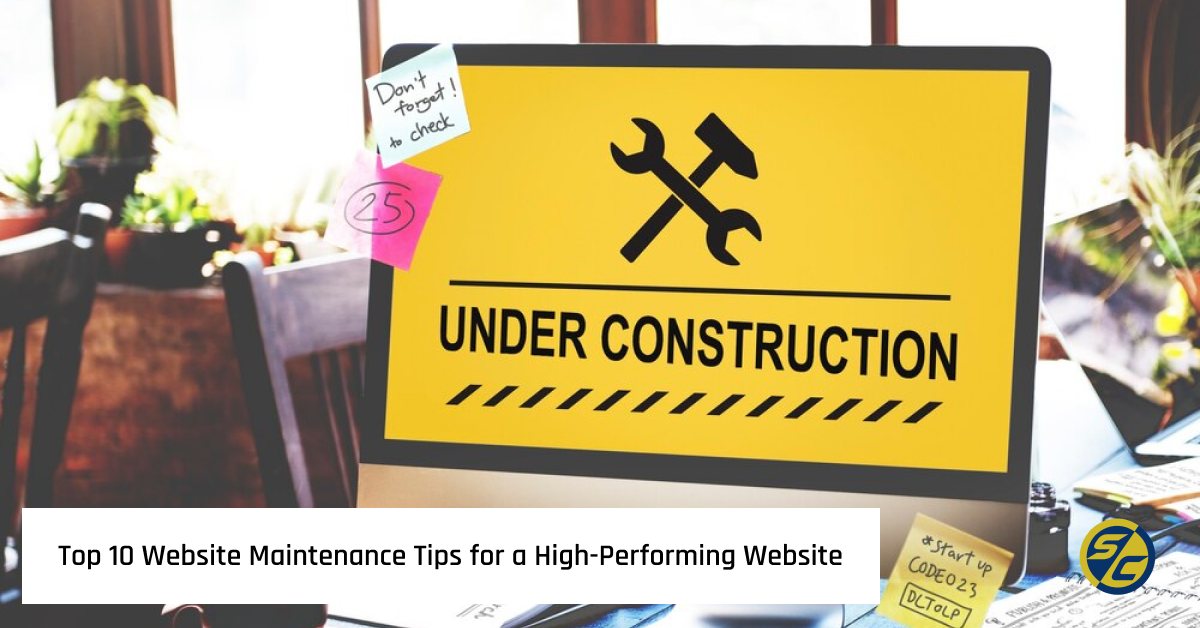Maintaining a website is much like maintaining a car—it requires regular check-ups and updates to ensure it runs smoothly and efficiently. In the digital age, your website is often the first interaction potential customers have with your business. A high-performing, well-maintained website can make a lasting impression and significantly impact your success. This blog will provide you with the top 10 website maintenance tips to keep your site in top shape, ensuring optimal performance, security, and user experience.
Regular Backups: Essential Website Maintenance for Data Safety
Always backup your website to prevent data loss in case of a hack or technical issue. Regular backups are crucial to safeguard your website’s content and data. Imagine losing months or even years of work due to a technical glitch or a malicious attack. To avoid this nightmare scenario, set up automatic backups and store them in multiple locations, such as cloud storage and external drives. This ensures you can quickly restore your website to its previous state if anything goes wrong.
Update Software: Key to Secure and Efficient Website Maintenance
Keep your website’s software, including plugins and themes, up to date to ensure optimal performance and security. Outdated software is one of the most common vulnerabilities exploited by hackers. By regularly updating your CMS, plugins, and themes, you can protect your site from potential threats and ensure compatibility with the latest web technologies. Make it a habit to check for updates weekly and apply them promptly.
Monitor Website Speed: Crucial Website Maintenance for User Experience
Regularly test your website’s speed using tools like Google PageSpeed Insights to identify and fix any slow-loading pages. A slow website can frustrate users and drive them away. Monitoring and optimizing your site’s speed improves user experience and boosts your search engine rankings. Compress images, leverage browser caching, and minimize CSS and JavaScript files to enhance loading times. Aim for a load time of under three seconds to keep visitors engaged.
Check for Broken Links: Important Website Maintenance for SEO and Usability
Broken links can harm your website’s user experience and SEO. Use tools like Broken Link Checker to identify and fix any broken links. Broken links lead to dead ends, frustrating visitors and damaging your site’s credibility. Regularly scanning for and fixing broken links ensures that all your content is accessible and helps maintain your search engine rankings. Set a schedule to check for broken links monthly and address them promptly.
Optimize for SEO: Integral Part of Website Maintenance
Implement SEO best practices, such as using relevant keywords, meta descriptions, and optimizing images, to improve your website’s visibility in search engines. SEO is a continuous process that involves optimizing your content to rank higher in search engine results. Conduct keyword research to identify the terms your audience is searching for and incorporate them naturally into your content. Ensure each page has a unique meta title and description, and use alt tags for images to enhance your site’s SEO.
Enhance Security Measures: Vital Website Maintenance for Protection
Protect your website from cyber threats by installing security plugins, using secure passwords, and enabling SSL certificates. Website security is paramount to protect your data and maintain trust with your visitors. Use strong, unique passwords for all your accounts and enable two-factor authentication where possible. Install reputable security plugins to monitor and block malicious activity. An SSL certificate encrypts data transferred between your site and its users, boosting security and improving SEO.
Test Website Forms: Crucial Website Maintenance for Functionality
Regularly test all forms on your website, such as contact forms or lead capture forms, to ensure they are functioning properly. Forms are a critical component of user interaction, whether for inquiries, subscriptions, or purchases. Ensure they work correctly by testing them regularly. Check for broken fields, error messages, and successful submissions. Regular testing helps maintain a seamless user experience and ensures you capture valuable leads and inquiries.
Review Analytics: Essential Website Maintenance for Performance Tracking
Monitor your website’s performance using Google Analytics to track important metrics like traffic, bounce rate, and conversion rates. Analytics provide valuable insights into how users interact with your site. Regularly reviewing these metrics helps you understand what’s working and what needs improvement. Track key performance indicators (KPIs) such as page views, session duration, and conversion rates. Use this data to make informed decisions and optimize your site for better performance and user engagement.
Update Content: Key Website Maintenance for Engagement
Keep your website fresh and engaging by regularly updating content, blog posts, and images to keep visitors coming back for more. Stale content can drive users away and negatively impact your search rankings. Regularly adding new content and updating existing pages keeps your site relevant and engaging. Aim to publish new blog posts or articles weekly and review existing content quarterly to ensure it remains accurate and up to date.
Check Mobile Responsiveness: Crucial Website Maintenance for Accessibility
Ensure your website is mobile-friendly by testing it on different devices and screen sizes to provide a seamless user experience for all visitors. With the majority of web traffic coming from mobile devices, having a mobile-responsive website is essential. Use responsive design techniques to ensure your site adjusts smoothly across various screen sizes. Test your site on different devices, including smartphones and tablets, to ensure it looks and functions well everywhere.
Conclusion
Website maintenance is not just a one-time task but an ongoing process to ensure your website remains high-performing and user-friendly. By implementing these top 10 tips, you can keep your website running smoothly, enhance its security, and provide an excellent user experience. Regular maintenance helps you stay ahead of potential issues, improve your site’s performance, and ultimately drive more traffic and conversions. Invest time in maintaining your website, and you’ll reap the rewards of a high-performing, reliable online presence.




